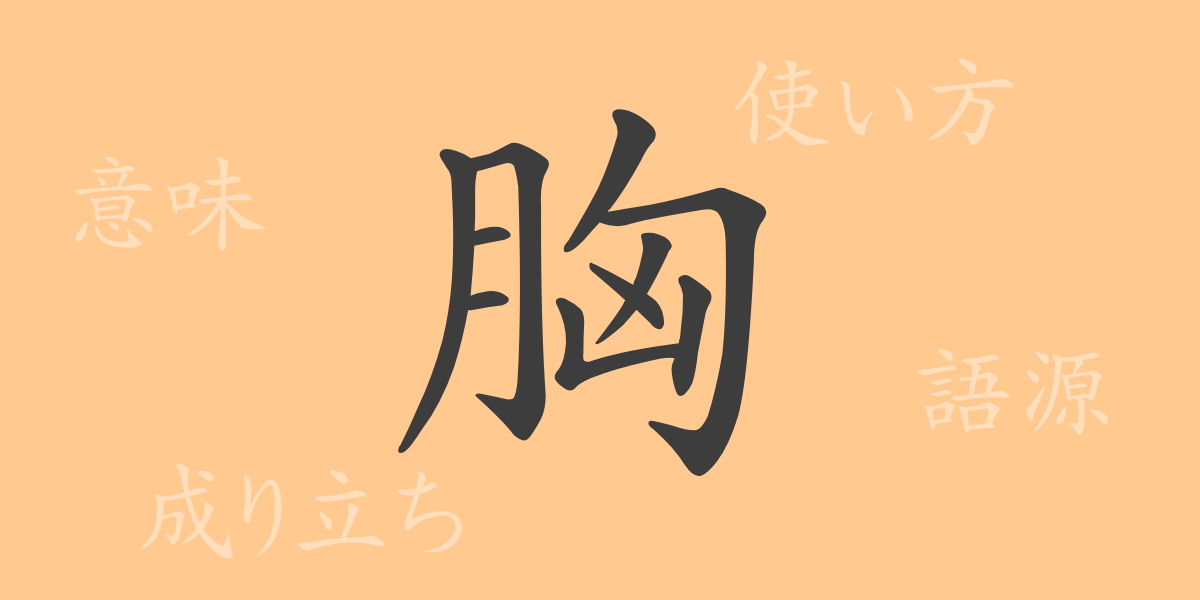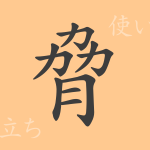The beauty of the Japanese language lies in the profound meanings and history embedded in its characters. One of the commonly used kanji, “胸(むね),” not only represents our emotions and a part of the body but is also used in various expressions and phrases. This article delves into the origins, meanings, usages, readings, and idioms involving the kanji “胸(むね),” exploring its multifaceted charm.
Origin of 胸(むね)
The kanji “胸(むね)” has its roots in ancient China. Initially, it was a pictographic character depicting the ribs covering the chest. Over time, the shape evolved into its current form. This kanji not only literally refers to the human chest but has also been used symbolically to represent the heart and emotions.
Meanings and Usage of 胸(むね)
The kanji “胸(むね)” primarily refers to a part of the human body, specifically the chest. However, it is also used metaphorically to mean “heart” or “feelings.” For example, “胸をなでおろす(むねをなでおろす)” means to feel relieved, and “胸が痛む(むねがいたむ)” means to feel emotional pain. It is also used to indicate one’s will or determination, as in “胸に手を当てて考える(むねにてをあててかんがえる),” which means to reflect deeply.
Reading, Stroke Count, and Radical of 胸(むね)
The kanji “胸(むね)” is frequently used in Japanese.
- Readings: The on’yomi (Chinese reading) is “キョウ,” and the kun’yomi (Japanese reading) is “むね” or “むな-.”
- Stroke Count: “胸(むね)” consists of 10 strokes.
- Radical: The radical is “肉(にくづき),” meaning “meat” or “flesh.”
Idiomatic Expressions and Proverbs Using 胸(むね)
Numerous idiomatic expressions, proverbs, and phrases in Japanese incorporate “胸(むね).” Here are some examples:
- 胸を借りる(むねをかりる) – To seek advice or learn from others to deepen one’s own thoughts.
- 胸を打つ(むねをうつ) – To be deeply moved or struck emotionally.
- 胸を張る(むねをはる) – To stand proudly and confidently.
- 胸に迫る(むねにせまる) – To feel a strong emotional impact.
- 胸がすく(むねがすく) – To feel refreshed or relieved.
Conclusion on 胸(むね)
The kanji “胸(むね)” goes beyond simply referring to a body part; it is also used to express human emotions and psychological states. Its rich meanings and usages expand the expressive potential of the Japanese language. By understanding the various facets of “胸(むね),” we can appreciate the depth and beauty of Japanese expression even more.

























